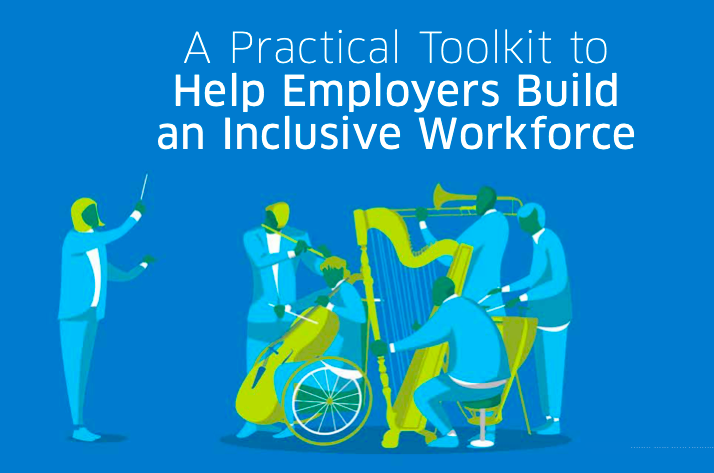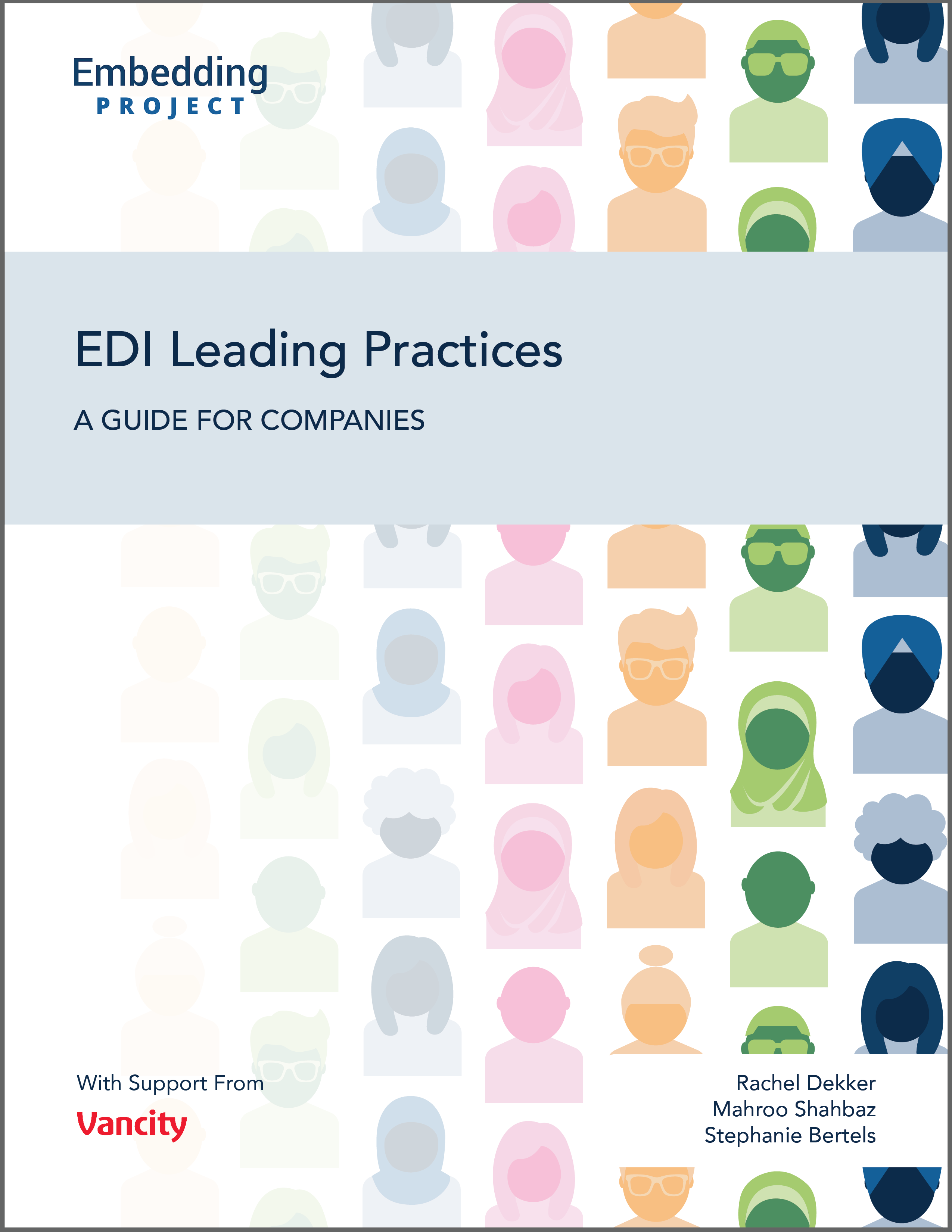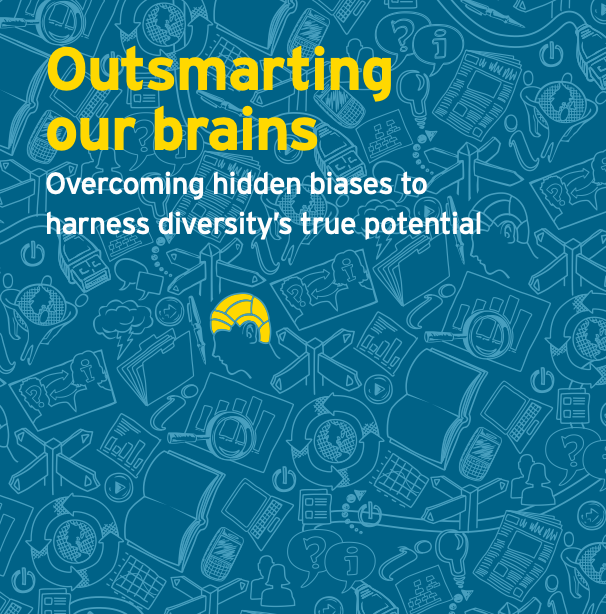Onboard & Offboard
Description
These resources will help you signal your commitment to supporting social and environmental resilience as a core part of your recruitment and onboarding activities, and include best practices and case studies for green hiring strategies; how to embed sustainability into your employer brand; assess candidates with respect to cultural fit, competencies, skills; and set expectations in the onboarding process.
Share this Practice on:LinkedIn
Resources
Recruitment
Next-Generation Corporate Responsibility and Sustainability Jobs
As industries embrace and embed sustainability into their planning, processes, and culture, a new imperative has emerged to transition the role and skills - and job description - of CSR and sustainability professionals from an operational to a strategic focus. This briefing provides ideas and examples that can help you to inform and adjust job description updates and performance and professional development plans, and will be particularly helpful for sustainability practitioners and recruitment professionals.
A Practical Toolkit to Help Employers Build an Inclusive Workforce
This toolkit from the Mental Health Commission of Canada is an excellent resource for creating an accommodating and inclusive workplace and addressing the needs of workers living with mental illness. The toolkit is divided into five sections: an organisational self-assessment that can help you to identify what your organisation is doing well and where it can improve; an exploration of workplace strategies and resources for addressing key issues; case scenarios; a framework to help you assess your organisation's ROI and predict related costs; and practical tools that can help you to monitor, evaluate, and ensure ongoing improvement. The toolkit will benefit HR professionals and employees tasked with wellness, diversity, and other sustainability-related responsibilities to improve recruitment and retention, and to support policies and practices that affect everyone.
Fair and Ethical Recruitment Due Diligence Toolkit
This toolkit from the International Organization for Migration (IOM) can help you to respect human rights and advance equity in the context of international recruitment. It provides practical tools for conducting comprehensive due diligence in line with the UN Guiding Principles on Business and Human Rights (UNGPs), the OECD Due Diligence Guidance for Responsible Business Practice, and IOM’s Migrant Worker Guidelines (MWGs). These tools include detailed guidelines and practical recommendations on how the due diligence processes described in the UNGPs and MWGs can be operationalised. They also include interactive features that direct users to the next due diligence process or the corresponding actions that are recommended for them to take.
Advancing Recruiting’s Value Through Uncertain Times: Shaping the Workforce
Most recruitment continues to rely on traditional methods of appraising and acquiring talent - ones that desperately require redesign in the face of multiple intersecting issues. As a result, organisations are increasingly struggling to fill roles with suitable, long-term candidates. Gartner surveyed nearly 3,000 candidates and more than 3,500 hiring managers and found that only 16% of new hires are highly prepared with the right skills for their current position and for the future. This paper explains how recruitment and onboarding strategies must shift from 'replacing' to 'shaping' the workforce, and will help you to build an effective pipeline of appropriately skilled talent.
4 Ways to Attract Top Sustainability Talent
This short article from Sharon Houde at Sustainable Brands provides easy entry points for attracting, retaining, and empowering sustainability professionals. This resource can be applied to procurement and supply chain-related recruitment where sustainability skillsets are needed.
Equity, Diversity and Inclusion in Recruitment, Hiring and Retention
This fact sheet by the Urban Sustainability Directors Network (USDN) provides guidance on applying an equity lens to hiring for sustainability-related roles. It covers tactics for supporting diversity and countering bias across the employee lifecycle, including within job descriptions, DEI statements, outreach processes, resume reviews, interview questions, onboarding processes, and more. This practical guidance will be especially useful to hiring managers.
Sustainable human resource management: The good, the bad, and making it work
This article explores the shift away from the traditional standard employment relationship to more flexible, temporary, and precarious work arrangements, as well as the nature, drivers, and consequences of precarious employment. It then explains the role that sustainable human resource management (HRM) can play to manage people in a way that benefits both employee wellbeing and long-term business success. Finally, it identifies key principles of sustainable HRM; examines how organisations can contribute to sustainable HRM by establishing high-quality sustainable “psychological contracts”; and presents practical guidelines that can help HR practitioners and organisations to implement sustainable psychological contracts effectively.
Is Corporate Social Responsibility Part Of Your Recruiting Emphasis
Employees are becoming more socially selective when searching for a job, and have a growing preference for employers whose CSR practices align with their beliefs. This article can help you to understand the potential of corporate social responsibility (CSR) as a tool for employers to recruit and attract strong talent.
Other Resources
EDI Leading Practices: A Guide for Companies
Workplace equity, diversity, and inclusion (EDI) is a complex and rapidly evolving space, and increasingly, companies are interested in understanding how to meaningfully advance EDI in their organisations. To help them do so, we consulted EDI research and guidance, reviewed practices of over 100 companies, and sought input from practitioners across a range of industries and geographies. Our Equity, Diversity, and Inclusion Leading Practices Guide offers a comprehensive framework with practices, case studies, and resources to help organisations embed EDI into their strategy, structures, and culture.
The Role of Human Resource Management in Corporate Social Responsibility
This guide provides helpful background research on the connection between sustainability and a variety of HR functions, including recruitment, onboarding, and employee development. It also lays out ten steps that HR managers can take to support embedding sustainability within their organisation, along with examples from leading companies.
The Role of HR in Achieving a Sustainability Culture
Creating and embedding a culture of social and environmental sustainability within your business strategy requires comprehensive integration and coordination with human resource functions. Selecting, empowering, and retaining sustainability-minded talent that values the integrity of vital systems means taking a conscientious approach to recruiting applicants, selecting and orientating new employees, evaluating performance, determining compensation and succession planning and training, and more. This research paper from Jay Liebowitz unpacks how creating a “people first” employer-of-choice culture contributes to creating a culture of sustainability and systems stewardship, and can help you to understand the role that HR can play in connecting the dots that will safeguard and grow these efforts.
Leadership for the Decade of Action
This short report can help you to embed sustainability into your leadership culture. Written by the United Nations Global Compact and Russell Reynolds Associates, it identifies leadership attributes that are critical for enacting sustainability-related transformations at the necessary level and scale. The report is informed by in-depth interviews with 55 sustainability pioneers, including chief executives and board members, and would be of particular benefit to reflective, growth-oriented leaders and to HR teams seeking to hire and develop new leaders.
Outsmarting our brains: Overcoming hidden biases to harness diversity’s true potential
Despite years of good intentions and organised efforts to foster a diverse and inclusive work environment, many companies are still struggling to grow and capture the benefits of fair organisational management. This short guide from Ernst & Young (EY) and the Royal Bank of Canada (RBC) explores the implications of hidden biases in today's work environment. It explains hidden bias, including how it emerges and manifests, and highlights ways in which it can affect behaviour in the workplace. This resource is a good starting point for identifying and challenging hidden biases when recruiting and promoting, and includes a list of simple questions, tips, and actions for identifying and correcting such discrimination.
How to deal with unconscious biases in human resources decisions
This article from the Diversity & Inclusion Platform can help you to understand how implicit biases can influence personnel-related decision-making, and why critical reflection is necessary for inclusive leadership, recruitment, and promotion. It provides a comprehensive explanation of implicit bias, including key causes and the ways it can manifest. It then explores the impact of implicit bias on recruitment and promotion, as well as how to avoid pitfalls. This is a good resource for business leaders, sustainability change agents, and HR professionals, and the principles may also benefit those tasked with team-building.
7 Ideas to Help Embed Sustainability in Your HR Life Cycle
In this blog post we delve into the ways that Human Resources teams can support the sustainability objectives of your company by integrating sustainability into every part of the HR life cycle. We include key resources for Human Resources teams to develop and manage an inclusive, sustainability-driven workforce.
Inclusive Offboarding: Preserve Relationships Even After an Employee Quits
This article from the Diversity Movement explains the benefits of maintaining strong connections with exiting employees and outlines key elements of an inclusive offboarding process. This resource will be especially beneficial to HR professionals.
Share this Practice on:LinkedIn













